-
Posts
1297 -
Joined
-
Last visited
-
Days Won
4
Posts posted by VitesseEFI
-
-
Thanks. Appreciate the input.

Some of these I can answer, some I’m going to have to check.
The spline was definitely lubed when assembled. Grease used was from a tube of special LUK spline grease that I’ve used on every clutch I’ve done in about the last 15 years. Seems to work elsewhere! There’s no trace of it now though.
Misalignment. Yeah. I’d like to think not but…. What I can say is that when last assembled the engine was out of the car and it went together really nicely. Clack! Straight up to the engine, no pulling it up with the bolts. With the ball-race spigot bearing and the gearbox bearings still being decently tight, I just can’t see that happening without alignment being decent. I will revisit…
Crank thrust I will check. It is a known weakness on these engines - though this one has PB thrust washers so I’ll be (very) disappointed if it’s this.
Hydraulics I’m confident are good. All hard-piped (with a coil for flex) and there’s travel to spare in both directions.
I’ve been measuring the release arm geometry and running it through a full stroke to characterise it. It’s running roughly in the middle of its range. Haven’t plotted the results yet but, quick and dirty, I measured the slave stroke before dismantling at 20mm and this seems to equate to about 9mm at the bearing. I measured a very similar clutch a couple of years back when designing the concentric setup on my GT6 and that needed 6mm for release, so pretty sure I have more than I should need. So “over-throw” yes, almost certainly.
Various stacking heights still to check. Definitely no actual contact between the friction plate and the diaphragm, even with the over stroking.
Release bearing profile is definitely open to question. More work needed here.
-
 2
2
-
-
About 20 years ago I got fed up with whining, grinding, leakingTriumph gearboxes and managed to shoehorn a Toyota W58 from a Supra into my Vitesse.
I couldn’t get much sense out any of the companies offering conversions (whether in NZ, Oz or US), and anyway I’m cheap, so I made my own. Some detail on that here
https://triumphowners.com/to-car/vitesse-mkiii-efi/
(Scroll down to special interest projects).
One of the challenges was the clutch. What I ended up with was the original Triumph pressure plate squashing a friction plate listed for a 70s 1.6 Hiace. It was 200mm rather than 215mm and a bit thick, but it worked. Spigot bush was a modified oilite top-hat bush fitted to the flywheel (oe bush is in the crank but Toyota shaft too stumpy to reach). The release mech including bearing and slave cylinder were standard Toyota Supra.
After about 10k miles it was becoming obvious that the clutch had problems. Odd noises when taking up and lots of shunt when trickling along in traffic accompanied by clanks and squeaks from the bell housing. Managed about another 5k and pulled it apart. Basically, the sprung centre was disintegrating and the springs utterly crushed. I put this down to the combination of the springs always being too light for the 2L torque and it being a rather crappy QH aftermarket plate. Managed to find a better quality one and slapped it back together. All good for about 10k miles (some of them very hard miles) before the noises started again. Engine was done too so everything came out for a refresh. Once again the sprung centre was collapsing with very crushed springs.
This time I splashed out and bought a bespoke 215mm friction plate built for the application from Helix Motorsport. It was expensive - seemed well made. Also used a brand new cover plate, machined the flywheel to take the OE Supra ball-race spigot bearing and spent some time checking concentricity and made some minor changes to doweling. I also did some detailed measuring and determined that a 5/8” M/C should give the correct throw. I had been using 3/4”!
Once back together it worked beautifully. Light action, biting point mid-stroke, plenty of bite. No more excessive shunt. Only concern, slight squawk from the bellhousing on initial pedal pressure. Anyhow, got some miles on the new much fiercer engine, mapped it. Went for a hoon around Europe. All good.
Except….. after about 5k, the biting point was near the floor. Then on the floor…. Then under the floor. Could find nothing wrong externally, so I cheated and fitted a 0.7” M/C. Problem solved. Slightly heavier pedal but otherwise good. Apart from that squawk.
Fast forward a few years and maybe 8k miles and preparing for another European mission, I have my wife drive the car as practice and she struggles because the biting point is once again on the floor. I cheat (again!) a stick a 3/4” M/C. Problem solved. It’s a bit heavy now though.
So, in the last 4 to 5 years and 12k miles the biting point has continued to go down. Or rather, it’s been getting wider. That is, you have to crush the carpet to get it to clear, but it doesn’t fully bite up until right near the top, and how much bite comes in at what point in between seems variable.
Yesterday I decided it was time to stopping ignoring it (apart from moaning about it) and investigate.

Wrestling it out is a bit of a mission. Some of the bellhousing bolts are very inaccessible, it’s probably my fault (consequences of various mods) but the Audi design guys would probably give me 8/10. Two marks deducted for not using Torx/triple hex heads.
This bit looks normal-ish. Bit grubby and the plate is very sticky on it ….. and there’s loads of backlash!

Spline in my expensive Helix plate is completely borked.
This is what it should look like (this is a 200mm Exedy plate)
 So, that’s part of the problem. The plate hanging on the splines would explain the variability and possibly some of the long travel.
So, that’s part of the problem. The plate hanging on the splines would explain the variability and possibly some of the long travel.
Also….

This looks distinctly unpromising. Especially since only about 28k miles in total. That’ll be the squawk then….
Friction surfaces all look fine. Plate is 1/3 worn at most. It’s never slipped.
So what’s going on?
- Misalignment is a possibility though I’m struggling to see clear signs.- It is possible (probable) that the release bearing profile is wrong. It’s the Toyota one for a 250mm clutch being used with a 215mm cover. The Triumph release bearing doesn’t fit the carrier (2mm smaller ID, very thin wall on the carrier)
- It’s possible that the cover assembly is poor quality. Can’t remember where I got it.Its marked QY13039. More QH crap?
-That spline though. What has done that? Never seen anything like it. I’ve still got the last plate I used and the spline on that is perfect. Expensive and crap?
-Will do some more measuring today to check the release mech geometry but I don’t think it’s the problem.
I have new Sachs cover intended for a Saab that usually works very well, but obviously the friction plate and release bearing need more thought..
Thanks for reading. Ideas welcome!
-
 1
1
-
 1
1
-
-
22 minutes ago, Sunbeam said:
Why does a fiat 500 diesel pay the same ruc as a Land Cruiser 200?
That’s just plain wrong…..
-
Looks like an easy fix. Does de-registered mean it can never go back on the road, or just lots of red tape?
-
That’s a helluva drive. But what a spot!
Have you thought about buying a “double wide”, some pontoons and couple of big outboards and just sailing across?

-
 2
2
-
-
Interesting. Thanks. Every day is a school day

-
 1
1
-
-
1 minute ago, Alfashark said:
GM 3.2 core with their own heads etc. Should be a lot more room for belt & tensioner changes too.
Are you saying Alfa used this bottom end as a base for their V6?
-
 1
1
-
-
It’s this one
https://en.m.wikipedia.org/wiki/General_Motors_54°_V6_engine#3.2
I’m not sure how closely related to the 2.5 and 3.0 it is in terms of shared parts
-
5 hours ago, Adoom said:
Actually, I take that back, the engine front cover doesn't look right.
It’s out of one of the Vauxhall/Opel Omega family I believe. Most of them were auto I think. Possibly because GM don’t have a manual that will last the warranty period.
I’ll see if I can get more detail.
If he were to put it up for sale I might struggle to resist the temptation…..-
 2
2
-
-
-
My experience, having run the same engine (6 cylinder Triumph) on single ITB with MAP as sole load sensing signal and then “upgraded” to ITBs is that both ignition and fuel maps were utterly different and it was not possible to use MAP as the sole load sensing signal as it wasn’t generating enough vacuum. (All 6 runners connected to a single sensor). I’m using “ITB mode” which is a blend of MAP and Alpha N (TPS) and seems to work ok.
-
Yeah, but you don’t find all the leaks…, because antifreeze makes leaks

-
 3
3
-
-
We had a 1999 UK spec Primera GT a few years ago. Was quite nippy, and lovely pointy handling, but you had to work it fairly hard to make progress. The B3 Audi 90 I had at the same time was effortless by comparison in spite of 20 less bhp on paper.
Nicely finished inside with plenty of toys (for the time). Crap lock makes parking a pain. Nothing went wrong with it but people kept driving into it. Sold it to buy another Mk2 Golf GTI.Don’t think we ever got the P11 wagon here…
-
 1
1
-
-
Plain water one is new to me. I have seen it written that some like to do the first start dry and run until just hot enough to melt the glue coating. Judging that makes me twitchy…
Alternatively run plain water and cap off so the system can’t be pressurised? Certainly it is true that antifreeze is good at creeping through any gaps

Hope it can be resolved without additional effort and expense!
-
 1
1
-
-
Liked for the car content, not your health problems….
Get well soon & don’t overdo it in the meantime!
-



That’s the “I have made fire” moment right there.
Congratulations on the birth of your “monster”

Bloody good work. Looks and sounds the business.
-
 1
1
-
-
That wiring brings back more (dubious) memories. Mine was bought very cheap (though not nearly cheap enough as it turned out) because it had had a small loom fire under the dash - though one caused by careless welding than an electrical fault. Just at the point where front and rear loom plug together. Ended finding a used front loom locally and repairing the short section of the rear. I carefully removed the font loom, snipping the wires to leave colours visible so I could just swap the replacement in. Trouble was, old and new looms were completely different colours and the Haynes book of lies was different from both of them
 . This led to about a week of very long evenings puzzling it out. When I finally (very gingerly) connected a battery, literally the only thing that happened was one of the headlight pods winding up and down… continuously. Which led to several more long evenings.
. This led to about a week of very long evenings puzzling it out. When I finally (very gingerly) connected a battery, literally the only thing that happened was one of the headlight pods winding up and down… continuously. Which led to several more long evenings.
That Uno turbo motor…….. my early 1300 could certainly have used some extra grunt. It was desperately slow. Waaaay slower than the Herald 1200 (with 1500 Spitfire running gear) I was mostly using at the time. Lent the Herald to a mate then attempted to keep up with him in the Fiat. It was hopeless. He blew past me on the first straight and next time I saw him, 22 twisty miles later, he’d already got the tea made.

-
- Popular Post
- Popular Post

Amazing what you can get on a Yeti roof rack…….
-
 11
11
-
 3
3
-
1 hour ago, ThePog said:
But there is also a lot of veeeery thin steel to weld to, there has been a certain amount of hole chasing on this...
That sounds familiar!
Mine was proper rotten. Passenger footwell was filling with water, which turned out to because the wheel tub was in fact nothing but two layers of rubbery under-seal with bran-flakes between…. And a moderately heavy landing after a hump-backed bridge partially detached the front LH suspension turret leading to a lop-sided stance and very odd handling.
Fixed that and flogged it on quick!
Keep up the good work!
-
 1
1
-
-
That windscreen surround is giving me flashbacks…… to the horrifically rusty one I owned briefly in the late 80s. Was an early 1300 made in ‘79 so barely 10 years old at the time. Galloping rot was only one of the many issues afflicting that car.
Your repairs look good though

-
On 04/12/2023 at 07:03, azzurro said:
Id take it all back and ask them to not have the work experience kid play with the pipe bender this time.
This. Hopeless job and charged like a real one.
-
On 03/12/2023 at 04:20, SOHC said:
Dont fuck with Kjet, just keep driving using injector cleaner,
The rule with k jet is dont fuck with it
This!
I’ve had an early Mk2 Golf GTI and a couple of Audi 90s on K-Jet. All ran well and gave decent economy. The Golf K-Jet was a much punchier, sweeter revving engine than the electronically injected one we replaced it with.
They just looove injector cleaner. All three I owned had leaky cold start injectors. They got disconnected electrically. They don’t seem to leak if you don’t use them and the cars started just fine without even in sub-zero temperatures.
I ran the second 90 to almost 200k miles and that stopped responding to injector cleaner at around 170k. It responded really well to new injectors though.
Wouldn’t fancy trying to adapt it to a modified engine.
-
 4
4
-
-
One of my colleagues has a 3 month old Kia Sportage PHEV.
The electric portion is extremely unreliable as it prefers not to charge and is resistant to repair. Possibly local Kia tech talent is sub-optimal also.
Anyhow, it remains able to drag itself around while it’s awaiting (more) parts, thanks to the “backup” IC engine. Except when it suddenly sees a ghost and jams on the anchors….
Helps me feel better about my geriatric diesel

-
 1
1
-
 2
2
-
 1
1
-
 1
1
-
-

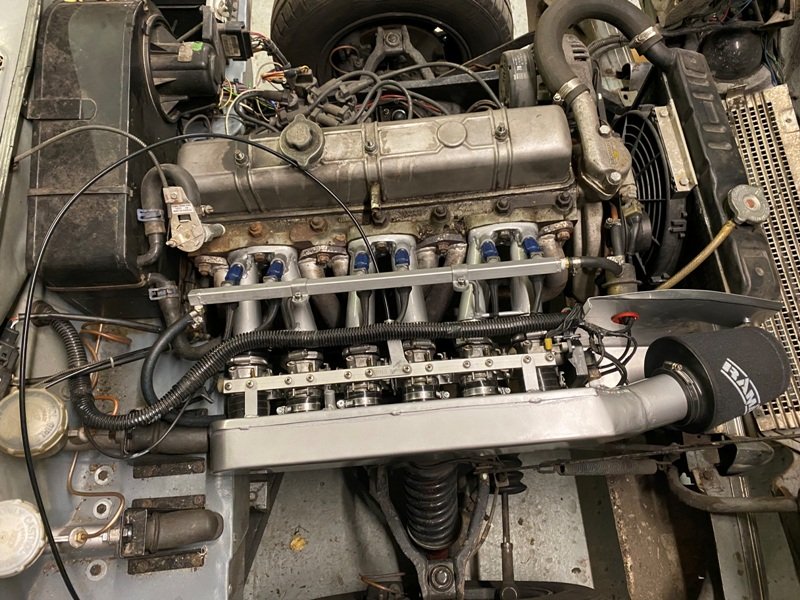

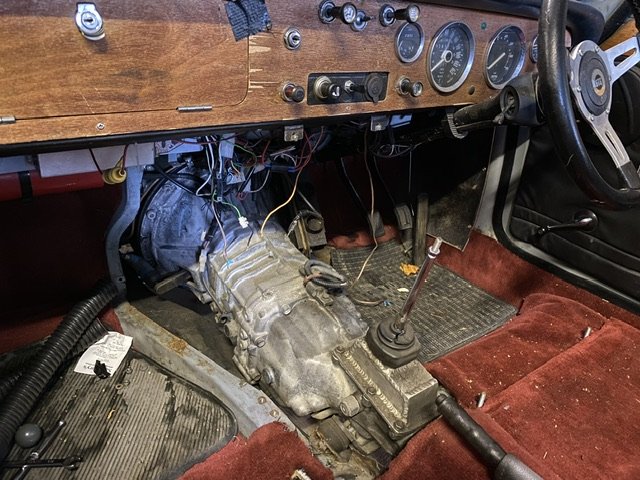
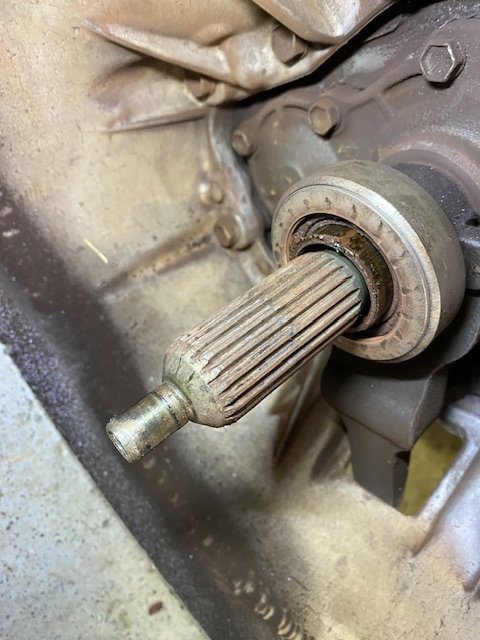
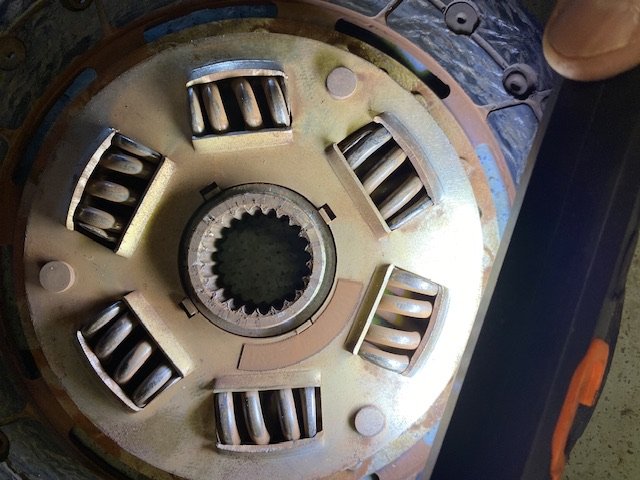
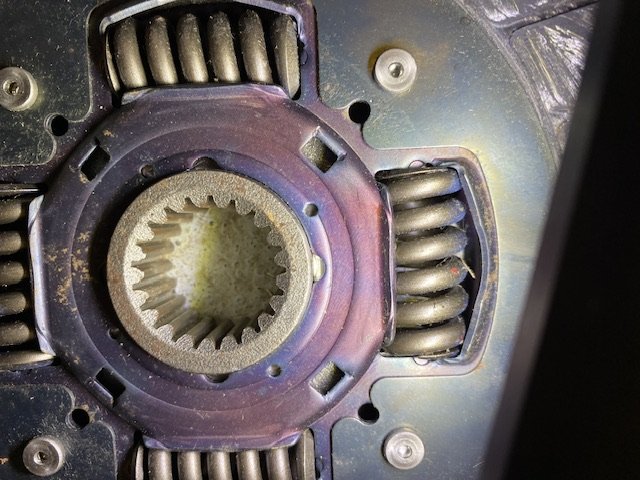 So, that’s part of the problem. The plate hanging on the splines would explain the variability and possibly some of the long travel.
So, that’s part of the problem. The plate hanging on the splines would explain the variability and possibly some of the long travel.
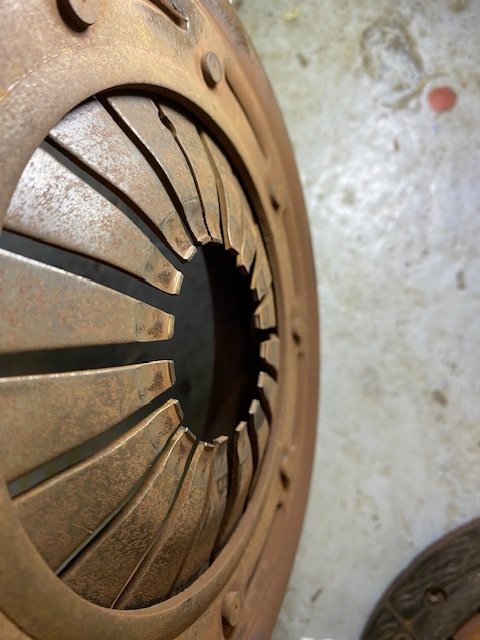
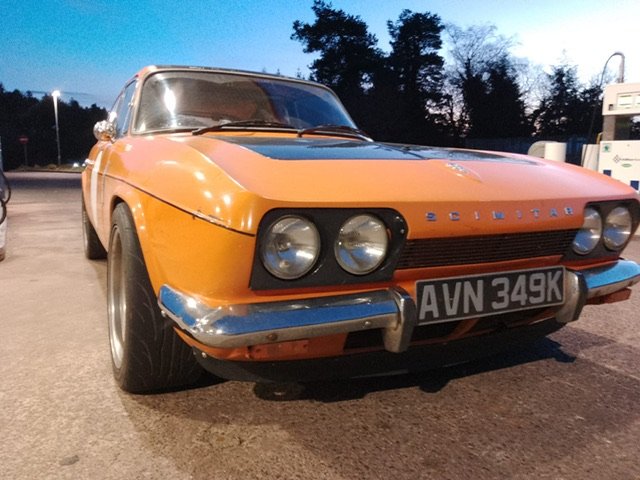
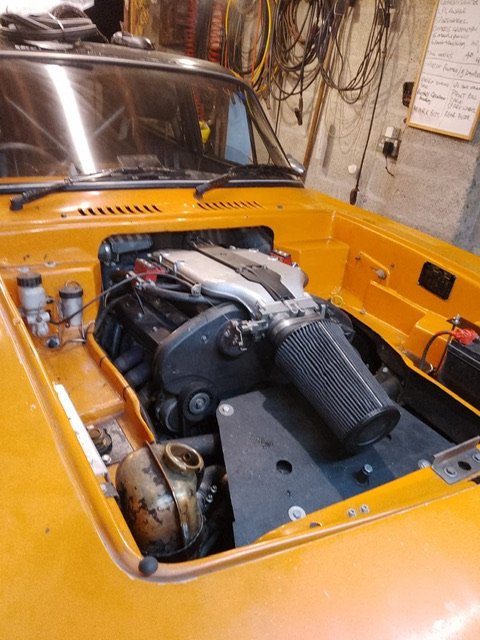


Arduino stuff/ programing/so cheap
in Tech Talk
Posted
Hello….. I resemble this remark (not just mathematically some would claim )
)
But even I can (mostly) follow Professor Dave’s tutorial